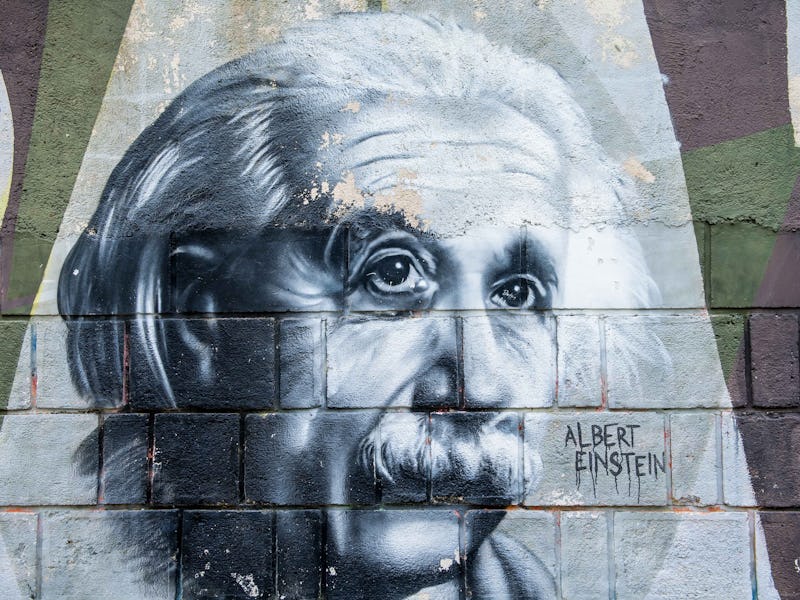A wild black hole discovery has been made
Plus: eight new scientific images that shine a light into the darkness.

I refuse to believe July is nearly over. Before you inevitably jump into this explanation of how a rapper could one day buy a planet, let’s get you caught up on the most essential science and technology headlines from Inverse today. I’m Nick Lucchesi, an editor at Inverse. Thank you for reading.
A tech note — If you’re paying attention to your newsletter opening streak, make sure you allow all the images in each email to fully download. (You should also turn off any ad blockers.) Email opens have always been tracked like this: An image in an email is stored on a server someplace, and when you open any email, the image download on your computer is how the server records that you opened the email. Long may our streaks live, fellow Platinum Status readers.
This is an adapted version of the Inverse Daily newsletter for Friday, July 30, 2021. Subscribe for free and earn rewards for reading every day in your inbox.
A bonkers black hole discovery — Jon Kelvey reports researchers have shown that the massive gravity of a black hole actually bent X-ray echoes from around its back, providing more evidence for general relativity.
When scientists first turned X-Ray space telescopes toward a supermassive black hole in the center of a distant galaxy, they knew their mission: How could it be that some of nature’s darkest forces are also some of its brightest?
Black holes are called black holes for a reason. Yet, the hot gasses that fall into black holes become superheated and glow intensely.
This was a question the international team aimed to solve. Instead, they wound up confirming Albert Einstein’s theory of general relativity in one of its most extreme tests.
More on black holes:
- When will we see the Milky Way's black hole? Why 2021 is an exciting year
- Scientists imaged an intensely powerful force coming from a black hole
- “Primordial black holes” could confirm a theory about the origins of the universe
One of our favorite science images of the week.
Understand the world in eight images — As NASA's Ingenuity helicopter set records on Mars, scientists unraveled a mysterious solar storm and made an important discovery about our brains this week. Bryan Lawver has put together an eye-popping gallery of new science images:
Scientists found insights into the natural world through research on rats and bees, while discoveries in space illuminated our Solar System and beyond the week of July 22–28. Here are the biggest science stories of the week, told in eight astounding images.
Galleries from previous weeks:
- Perseverance hunts for life and more: Understand the world in 8 images (July 22)
- Unity 22 test flight and more: Understand the world through 8 images (July 15)
- Ingenuity flight 9 soars and more: Understand the world in 9 images (July 7)
Why robots don’t deserve names — Robots today have human-like eyes and can “see” all around them — or can they? These human-like ideas of A.I. may be incorrect and potentially dangerous. Sarah Wells reports on this strange question.
The urge to anthropomorphize non-human — and often nonliving — things is a classic human instinct that extends far beyond childhood make-believe.
But when we project ourselves onto the technology we create, David Watson warns Inverse it could be a slippery slope. (Watson is a postdoctoral research fellow in the University College London studying machine learning.)
Go deeper:
- Tokyo 2020 Olympics: 5 robots and innovations that keep the games going
- This squirming robotic superstructure is the next Roomba
- Are the Boston Dynamics robots really dancing? The creepy video, explained
Tesla co-founder and CEO Elon Musk unveils the all-electric, battery-powered Tesla Cybertruck at Tesla Design Center in Hawthorne, California, on November 21, 2019.
Tesla Cybertruck release date — Mike Brown reports Tesla's all-electric pickup truck is set to complete the firm's plan to bring electric vehicles to the mass market.
The Tesla Cybertruck is coming — but it may take some time before it reaches buyers.
During the company’s second-quarter 2021 earnings call this week, the all-electric car firm explained how its upcoming pickup truck will demonstrate several manufacturing and battery design changes. But while the truck is scheduled to start hitting roads in late 2021, it will depend on how these planned changes pan out.
With the race to mass-produce a new Model Y and refine new manufacturing techniques, it’s perhaps of little surprise that the Cybertruck looks more like a 2022 vehicle.
Go deeper:
- Subscribe to the Musk Reads+ newsletter
- Tesla releases big, new software update with Disney+, Car Wash Mode, hotspot, and more (Electrek)
- Ford quickly reaches 120,000 orders for its Tesla Cybertruck rival (Yahoo! Finance)
Actor Laurence Fishburne marks a birthday today.
- About the newsletter: Do you think it can be improved? Have a story idea? Want to share a story about the time you met an astronaut? Send those thoughts and more to newsletter@inverse.com.
- Science Song of the Day: “Astronomy (8th Light)” by Black Star.
- Follow me on Twitter at @nicklucchesi, if for no other reason than to get Inverse headlines in your timeline and a few other Inverse-y things.
- Before we go: Terry Crews (53), Laurence Fishburne (60; pictured above), Kate Bush (63), Lisa Kudrow (58), and Christopher Nolan (51) were all born on this day (Source: AP).